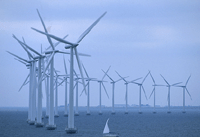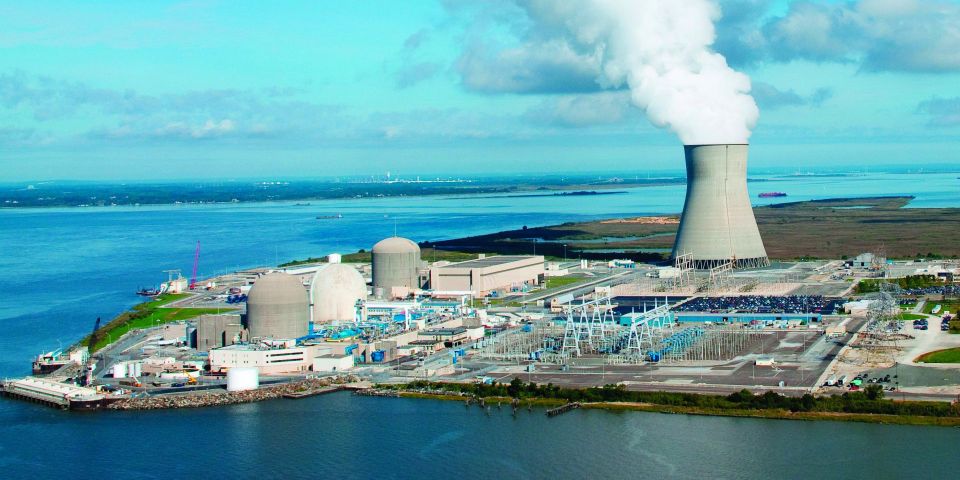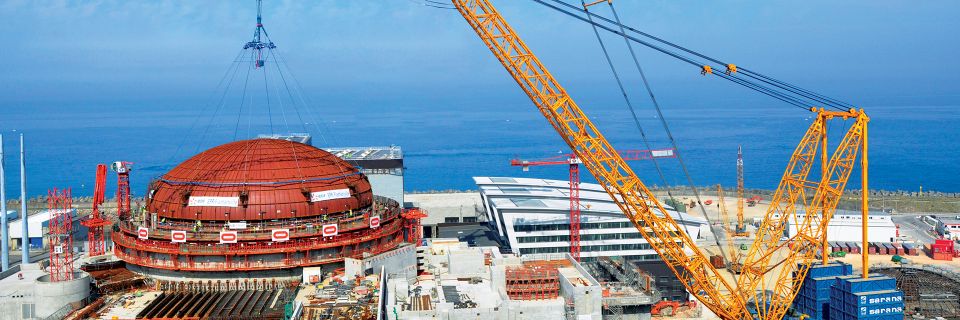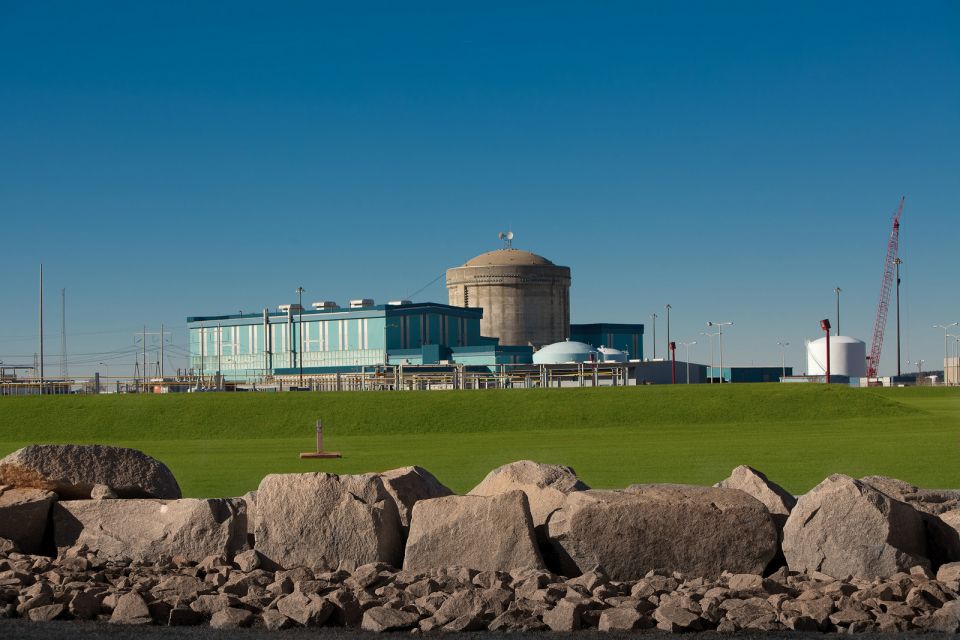In Defense of Eyesores
 Have you ever heard the joke about the football player who was so ugly that, whenever he stepped onto the field, he was penalized 15 yards for illegal use of face? Okay, you probably haven't heard that one before, because I just made it up. The concept of ugliness, both in the abstract and as attributed to specific entities, has long inspired creativity; after all, it spurred me to develop that magnificent joke. (For you young folks out there, the term "illegal use of hands" used to be applied to something one shouldn't do in football, only in the last few years the terminology has changed, so . . . ahh, skip it.)
Have you ever heard the joke about the football player who was so ugly that, whenever he stepped onto the field, he was penalized 15 yards for illegal use of face? Okay, you probably haven't heard that one before, because I just made it up. The concept of ugliness, both in the abstract and as attributed to specific entities, has long inspired creativity; after all, it spurred me to develop that magnificent joke. (For you young folks out there, the term "illegal use of hands" used to be applied to something one shouldn't do in football, only in the last few years the terminology has changed, so . . . ahh, skip it.)
Ugliness is often undervalued by society. I contend that eyesores actually enrich human life, by impelling us to come up with clever ways of deriding them. In my own japery I try not to get personal (despite the richness of the "Your Mama's So Ugly" genre), because I have no desire to be cruel, rude, nor the target of a shiv between the ribs. Fortunately, in our world we have no shortage of inanimate objects that are surpassingly ugly. Which brings us to cooling towers and wind turbines.
As it happens, I don't see either the large hyperboloid natural-draft cooling tower nor the large-scale wind turbine as particularly ugly, but from what I've been reading lately I may be in the minority. Plenty of people declare that their esthetic sensibilities are offended by these structures, perhaps not so much because of the things themselves, but the fact that they tend to be placed in settings where they seem to clash. Even if the construction and operation of these devices can be shown to be environmentally benign (or as close to that ideal as any alternative would have been), some yogurt-besotted backpacker would still whine about how they intrude upon his enjoyment of The Beauty Of Nature.
 A certain well-known, politically active, usually left-leaning family in the Northeast has come out strongly against offshore wind farms in that region, and the argument pretty much boils down to the fact that these folks don't want to see wind turbines while they're out on their yachts. Never mind that these people apparently accept the presence of lighthouses, breakwaters, Coast Guard facilities, and other human creations, because they've looked at them for years and perhaps had to hone some yachting skills by maneuvering around them.
A certain well-known, politically active, usually left-leaning family in the Northeast has come out strongly against offshore wind farms in that region, and the argument pretty much boils down to the fact that these folks don't want to see wind turbines while they're out on their yachts. Never mind that these people apparently accept the presence of lighthouses, breakwaters, Coast Guard facilities, and other human creations, because they've looked at them for years and perhaps had to hone some yachting skills by maneuvering around them.
Sure, we all go bananas over The Beauty Of Nature, even though in much of the world today, and in all of it until a couple hundred years ago, the natural world is/was a place where human survival is iffy at best. This is why people have tended to form tribes, gather in villages, and otherwise take steps to prevent all of that Beauty from killing them. I strongly suspect that a civilized person's love of Nature arises from her/his ability to escape its red-in-fang-and-claw aspects.
Ugliness alone does not strike me as sufficient reason to banish any object that serves a purpose. The proper response, says I, is to make jokes. The jokes can even be used to point toward issues that could be raised against the object, as follows:
That windmill is so ugly that:
- birds fly into the blades on purpose, just to stop seeing it.
- a certain oil tycoon put it in his energy plan, because he looks better when he stands next to it.
- grid operators are relieved when it's off line for days on end, so they can ignore it.
- the sleep-disrupting noise and animal-addling subsonics don't seem so bad by comparison.
Let's move on to cooling towers. They come in many varieties, but the one that makes the eyesore category is the humungous hyperboloid. It is also, in the public mind, an icon of nuclear power itself, thanks to eerie photos of Three Mile Island in 1979, with those worrisome red glows along the towers' sides. Actually, the glows came from aircraft warning lights (the Harrisburg, Pa., airport is near TMI), but they were shown out of focus (intentionally, I gather) on the cover of Time Magazine. This freaked out people who never found out that a tower carries out final-stage cooling of water that isn't radioactive.
Even less known to the public is that most nuclear power plants in the United States don't use hyperboloids. Of the 63 sites where power reactors are now in operation (counting Hope Creek and Salem as one site, and ditto FitzPatrick and Nine Mile Point), only 16 have hyperboloid cooling towers. Hyperboloids are, however, used at many power plants that aren't nuclear, and many plants that don't even generate electricity, sometimes leading to these installations being misidentified at a glance as nuclear plants. So much for the whole icon thing.
In several areas, cooling capacity is already strained in the summer, and one path to nuclear electricity production growth-the power uprate-increases a site's demand for cooling. So the fact that options exist for more cooling (such as through the addition of hyperboloids where they haven't ever been built) should be seen as encouraging. Lately, though, lots of industry folks get into a snit when anyone suggests they cough up for hyperboloids. Cost is usually cited, but I've heard a few people rip into them for being ugly (the hyperboloids, not the industry folks, although in some cases . . . but I digress).
If a certain major utility honestly believes that its best option is to give up half of a 20-year license renewal just to avoid building a hyperboloid, we may be heading for a reality check. State governments have a lot to say about whether power plants, or industries in general, comply with the Coastal Zone Management Act. All four power reactors in California have effectively been given until the end of their original license periods to stop using once-through cooling; even if their licenses are renewed by the Nuclear Regulatory Commission, the state will require some kind of added systems, hyperboloid or otherwise.
I suggest that we bite the bullet on cost, build more cooling towers, and then make jokes about how ugly they are, to wit:
That cooling tower is so ugly that:
- water filed a class-action lawsuit about having to go through it.
- fish are grateful for the salt rain, because it blocks the view.
- a certain major utility won't even put one on the Jersey shore.
Readers are, of course, encouraged to submit their own creations, in keeping with the ideal of high-minded discourse to which every blog must aspire. Imagine what a wonderful world this could be, if there were so much more inanimate ugliness out there, for all of us to ridicule without guilt. We'd be so busy there might not be time to notice your mama.
________________________________________
A. Priori is so ugly that he has to hold up a "No image available" sign in front of half of his face. He is the as-yet-undiagnosed disorder of E. Michael Blake, a senior editor of ANS's Nuclear News magazine; Blake would have you believe that he's devastatingly handsome.










